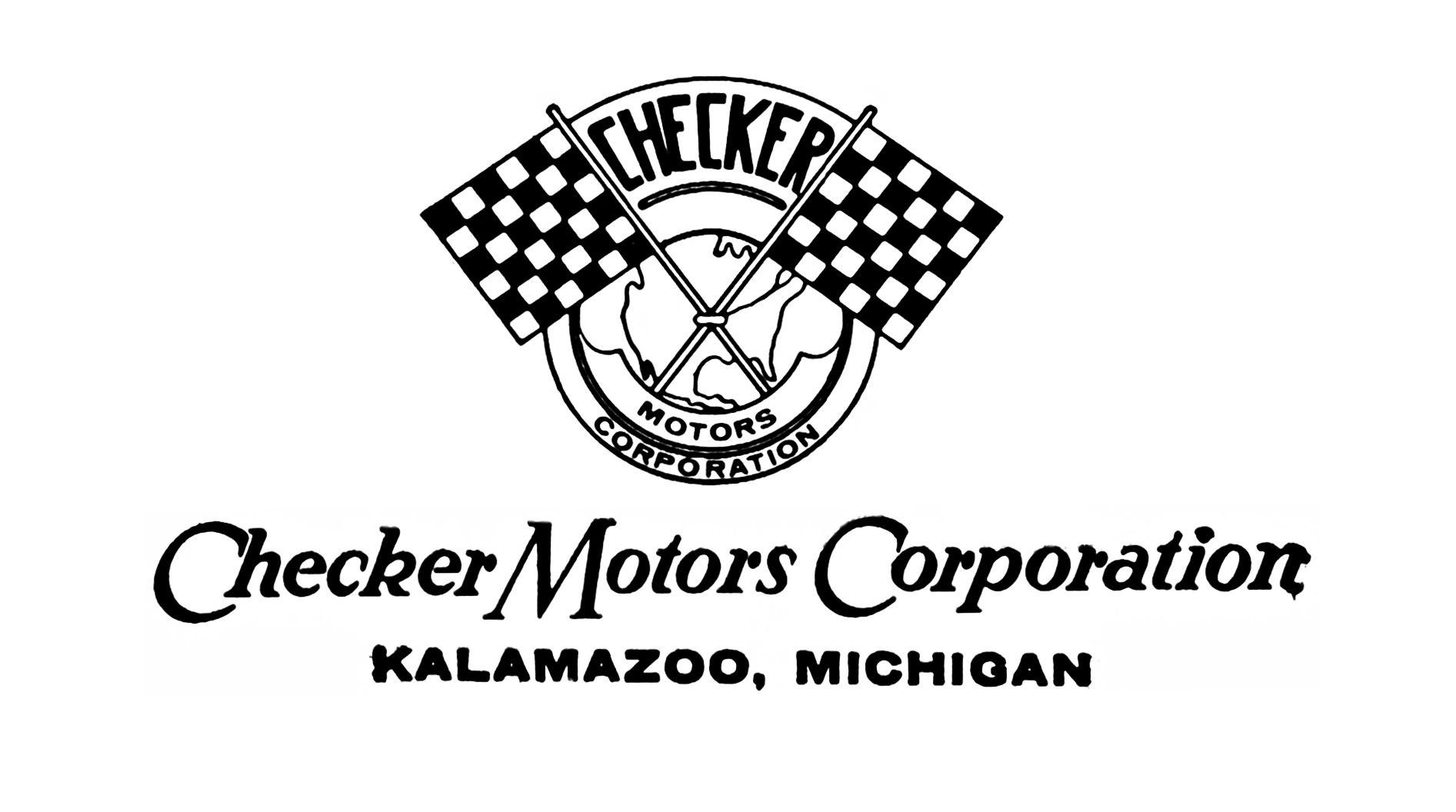Checker Motors Corporation

Checker Motors Corporation was a Kalamazoo, Michigan-based vehicle manufacturer and tier-one subcontractor that manufactured taxicabs used by Checker Taxi. Checker Motors Corporation was established by Morris Markin in 1922 through a merger of Commonwealth Motors and Markin Automobile Body.
Checker made the iconic American taxi cab, valued by taxicab companies for its durability in heavy use. Special features included wide rear doors, large rear seats and trunks. The company had trouble competing with fleet discounts offered by the larger manufacturers, as well as economies of scale in procuring components. The final models were produced in 1982.
Morris Markin (a clothier from Chicago, Illinois) became the owner of Markin Automobile Body, an auto-body manufacturer based in Joliet, Illinois, following a default by the owner on a $15,000 personal loan. The facility made bodies for Commonwealth Motors, which marketed the vehicles to cab companies under the trade name Mogul.
Commonwealth Motors was on the verge of bankruptcy, but had an order from Checker Taxi (a privately owned cab company in Chicago that had no affiliation with Markin at the time). Markin merged Commonwealth Motors with Markin Automobile Body to honor the contractual commitment. In 1930, Checkers came in either black, maroon, yellow or canary.[3]
Markin would slowly acquire Checker Taxi of Chicago over the course of the 1920s. In 1929, he purchased the Yellow Cab Company from John D. Hertz.
By the 1970s the Checker cab design was several automotive generations old. As the decade started the Checker A11 design had been in production for close to twenty years. A11 design elements could be attributed to a 1950 clay design. Some chassis components had ancestral linkage to the 1939 Model A design. Clearly, it was time for Checker to consider developing a modern taxi that would allow Checker to produce cars into the next century. Several projects were executed in the 1970s in the attempt to develop a new Checker. In 1974, US Steel and prototype builder Autodynamics of Madison Heights, Michigan proposed a new Checker idea called “Galva” to CMC. The plan was to design a new Checker using newly developed manufacturing techniques to produce a vehicle with a reduced amount of tooling. Unfortunately, the project never got off the drawing board; Checker management was happy and profitable. Checker would continue to produce the A11 and various other specialty cars.
By 1980 the US had gone through two energy crises, one in 1973 and one in 1979. Clearly it was time for Checker to consider developing a modern fuel efficient taxi that would allow the company to produce cars into the next century. The changes in the market were also making it harder and harder for Checker to find suitable off-the-shelf parts for their existing heavy vehicle, as General Motors (and Detroit overall) moved to producing lighter cars.[11]
In the early 1980s, by way of a series of financial transactions, David Markin monetized CMC. Potamkin and Cole's widow were paid out and both exited the company. Markin had total control of CMC again and the funds available to produce a new Checker. Moving beyond the Rabbit/Golf project, Checker's next attempt at a new taxicab was initiated via a partnership with General Motors' Fisher Body division. In 1980, General Motors introduced the X-Car line which was a major departure from traditional GM design. It was a front-wheel-drive platform with a transverse engine, similar to the BMC Mini concept. The new Checker was to be front wheel drive, ironic as this concept was first tested by Checker in the mid-1940s with the Model D project.
The planned partnership would have Checker purchase Chevy Citation “bodies-in-white” and then Checker would assemble them for taxicab use. The project did produce one prototype Citation test mule, but the project was short-lived.
Reported in the July 16, 1981 “Coachman”, Fisher Body's divisional newsletter, GM could not assure Checker a continued supply of Citation bodies for a time period that met Checker's requirements. Remember that by 1981, Checker had used the same body for 25 years. GM's planned obsolescence policy would exit the Citation by 1985. Checker had planned on the Citation/Checker taxicab to be introduced in 1982. Clearly, Checker could not afford to spend significant dollars on a design that would be obsolete a mere three years later.
Checker's final attempts at introducing a new cab came in early 1981. CMC signed a contract with Autodynamics to develop a new model. The project was called Galva II, an extension of the project originally begun back in 1974. Autodynamics developed a design that would use the latest GM components developed under the GM X car program. If successful, Checker could retrofit GM components as developed on a Checker-built body and would not have to rely on the Citation body.
Fisher Body was also involved in the Galva project. Plans were made for Fisher to supply various body components: door locks, windows regulators, door hinges and door handles.
Consistent with the original Galva 1974 project, the new Checker would be based on limited tooling. Paul E. Newman of Autodynamics was quoted in Automobiles Quarterly; “We had a particular build concept for them (Checker). It involved a low cost tooling and break form panels”. Howard E. Klausmeier of Autodynamics was quoted in Automotive News: “The intent is to standardize componentry and simplify tooling and manufacturing as much as possible. The only curved glass will be the windshield. All other glass is flat. In addition, the components provide easy replacement for repair and maintenance using simplified attachment systems.”
By 1980 the US had gone through two energy crises, one in 1973 and one in 1979. Clearly it was time for Checker to consider developing a modern fuel efficient taxi that would allow the company to produce cars into the next century. The changes in the market were also making it harder and harder for Checker to find suitable off-the-shelf parts for their existing heavy vehicle, as General Motors (and Detroit overall) moved to producing lighter cars.[11]
In the early 1980s, by way of a series of financial transactions, David Markin monetized CMC. Potamkin and Cole's widow were paid out and both exited the company. Markin had total control of CMC again and the funds available to produce a new Checker. Moving beyond the Rabbit/Golf project, Checker's next attempt at a new taxicab was initiated via a partnership with General Motors' Fisher Body division. In 1980, General Motors introduced the X-Car line which was a major departure from traditional GM design. It was a front-wheel-drive platform with a transverse engine, similar to the BMC Mini concept. The new Checker was to be front wheel drive, ironic as this concept was first tested by Checker in the mid-1940s with the Model D project.
The planned partnership would have Checker purchase Chevy Citation “bodies-in-white” and then Checker would assemble them for taxicab use. The project did produce one prototype Citation test mule, but the project was short-lived.
Reported in the July 16, 1981 “Coachman”, Fisher Body's divisional newsletter, GM could not assure Checker a continued supply of Citation bodies for a time period that met Checker's requirements. Remember that by 1981, Checker had used the same body for 25 years. GM's planned obsolescence policy would exit the Citation by 1985. Checker had planned on the Citation/Checker taxicab to be introduced in 1982. Clearly, Checker could not afford to spend significant dollars on a design that would be obsolete a mere three years later.
Checker's final attempts at introducing a new cab came in early 1981. CMC signed a contract with Autodynamics to develop a new model. The project was called Galva II, an extension of the project originally begun back in 1974. Autodynamics developed a design that would use the latest GM components developed under the GM X car program. If successful, Checker could retrofit GM components as developed on a Checker-built body and would not have to rely on the Citation body.
Fisher Body was also involved in the Galva project. Plans were made for Fisher to supply various body components: door locks, windows regulators, door hinges and door handles.
Consistent with the original Galva 1974 project, the new Checker would be based on limited tooling. Paul E. Newman of Autodynamics was quoted in Automobiles Quarterly; “We had a particular build concept for them (Checker). It involved a low cost tooling and break form panels”. Howard E. Klausmeier of Autodynamics was quoted in Automotive News: “The intent is to standardize componentry and simplify tooling and manufacturing as much as possible. The only curved glass will be the windshield. All other glass is flat. In addition, the components provide easy replacement for repair and maintenance using simplified attachment systems.”
n 2008, due to the late-2000s recession and high gasoline prices, sales at GM and other automakers plummeted. As a major supplier to GM, Checker saw its sales drop significantly. The company had net sales of $61 million in 2008 and projected 2009 sales of only $34.5 million, a decline of 43%. During the summer of 2008, Checker employed about 340 workers.
While the United States economy was in full recession, Checker Motors CEO David Markin fell victim to the Ponzi scheme started and run by Bernie Madoff. David Markin's name appears five times on the official list of Madoff victims. One address on the list was 2016 North Pitcher Street, Kalamazoo, the same address as Checker Motors Corp.
On January 16, 2009, the 87-year-old Kalamazoo company filed in U.S. Bankruptcy Court in Grand Rapids, Michigan. Escalating raw material prices and dwindling sales for its customers' products were cited as the main reasons for the filing, but another reason was labor costs. It was reported that a deal with unionized labor could not be reached after a year of negotiations.
At the time of the bankruptcy, Checker's customer base included General Motors, Chrysler LLC, Ford Motor Company, Navistar International and GM Shanghai. Checker was the eighth-largest American auto supplier to go bankrupt in recent years. GM and Chrysler followed Checker's bankruptcy just several months later.
In February, Checker asked the U.S. Bankruptcy Court for Western Michigan to reject its contract with 125 union workers and eliminate health care and pension benefits for 176 union retirees. On February 27, 2009, the judge in Checker Motors Corp.'s bankruptcy case threw out the company's request to eliminate its labor agreement. Bankruptcy Judge James D. Gregg agreed with United Steelworkers Union Local 2-682 attorneys that the company had not treated all parties involved in the proceeding fairly when it awarded four top executives a total of $275,000 in retention bonuses prior to filing for bankruptcy.
On January 14, 2010, the Checker Motor Company ceased to exist with the sale of its Kalamazoo headquarters. It was purchased for just under $3 million by a holding company, the Jones Group, which was to sell off the assets and clear the 72 acres. Checker president David Markin was quoted in the New York Times, "It's finished. Our family is very distressed about the closing of the company, but it became inevitable."
